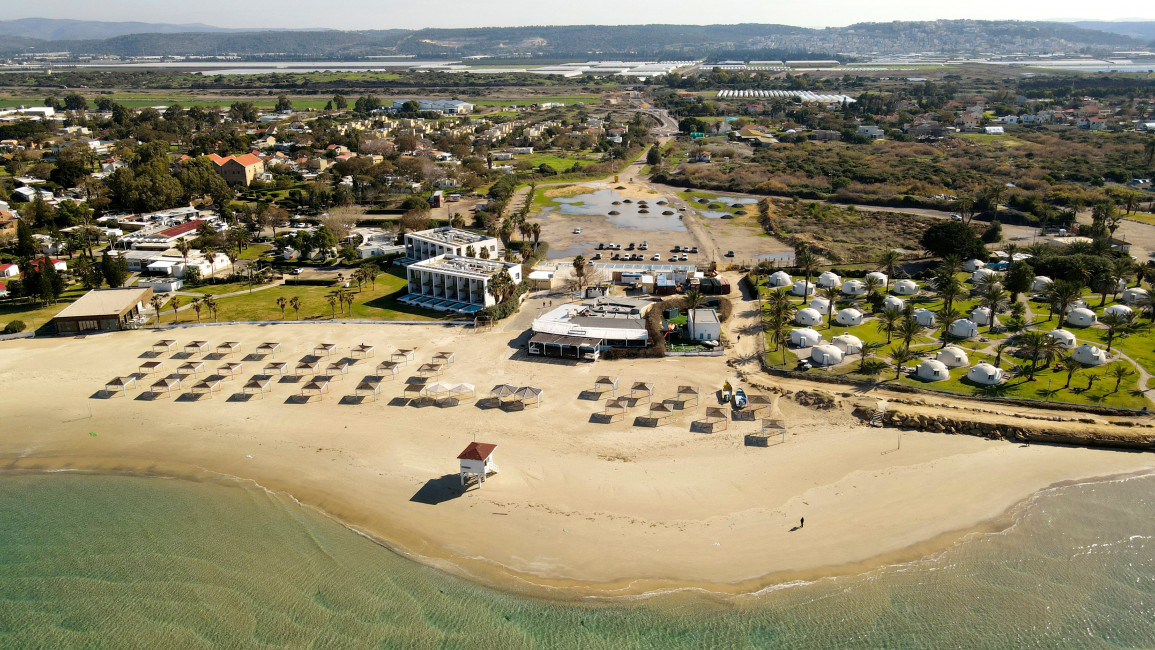
The Tantura massacre: Challenging Israel's narrative about the Nakba

In May, an investigation into the 1948 massacre of a Palestinian village carried out by Zionist militias revealed the locations of several new mass graves.
The first-of-its-kind study has corroborated survivors’ testimonies and challenges longstanding Israeli denial of the killings.
The investigation, carried out by human-rights-focused research group, Forensic Architecture, identified four mass graves in the Palestinian village of Tantura near Haifa, with two locations buried beneath an Israeli beach resort.
Tantura, which was home to 1,500 people, was one of the last remaining Palestinian villages following the state of Israel’s establishment.
"This is a turning point, hopefully locally and internationally, that's going to finally confront the Israeli systematic denial of 1948"
On 22-23 May 1948, the fishing village was attacked and occupied by the 33rd Battalion of the Alexandroni Brigade, a Zionist militia later absorbed into the Israeli army.
Once occupied, Israeli forces mass executed disarmed Palestinians in the village. According to survivors and historical records, these graves hold the bodies of those killed during the battle for Tantura and those executed after.
Estimates of the number of Palestinians killed range from 40 to 200 people.
Shourideh Molavi, Forensic Architecture’s lead researcher on the Tantura investigation, told The New Arab she hopes this case study will help set a precedent in how the Nakba, or ethnic cleansing of Palestine during Israel’s founding, is viewed.
“With Tantura, what we're hoping to do is open the door to other villages, both in terms of the methodologies used, in terms of the strategy used, and the care that's given to the memory of survivors and perpetrators in telling the story,” Molavi said.
During the Nakba, which means ‘catastrophe’ in Arabic, at least 530 Palestinian villages were destroyed by Zionist militias in 1947-1949 and 750,000 Palestinians were expelled.
Forensic Architecture’s findings are part of an initiative by Adalah – The Legal Center for Arab Minority Rights in Israel to demarcate Tantura’s burial sites and bring closure to victims’ families.
On 24 May, Adalah sent a letter, which included Forensic Architecture’s evidence, to Israeli government authorities on behalf of 11 displaced residents of Tantura and the Tantura People’s Committee demanding that signage memorialising the massacre be installed.
|
|
“It cannot be contested that there are mass graves that need to be preserved, protected, and inhibiting the families to visit these graveyards in a dignified way for decades now is a violation of the rights of the deaths and [of] the families,” Dr Suhad Bishara, Adalah’s legal director, told The New Arab.
While both Molavi and Bishara describe the investigation as limited in scope given it is confined to the question of the Nakba’s mass graves, Molavi emphasised that Tantura’s significance in Israeli culture has the power to open up the conversation about what happened in 1948.
“Because of [Tantura’s] placement within Israeli consciousness, society, politics, academia, and press, it does have the potential to push discussions around this forward in a way other villages couldn’t,” Molavi said.
"With Tantura, what we're hoping to do is open the door to other villages, both in terms of the methodologies used, in terms of the strategy used, and the care that's given to the memory of survivors and perpetrators in telling the story"
Reckoning with reality
The Tantura massacre has long been met with scepticism by Israelis. In the 1990s, Haifa University graduate Teddy Katz interviewed hundreds of witnesses to the massacre for his thesis.
A decade later, he was sued for defamation by Alexandroni Brigade veterans, forced to sign a letter of retraction, and had his university degree revoked.
Last year, an Israeli-made documentary on the massacre was also met with condemnation and accusations of fraud.
Nakba denial is ingrained in the state of Israel’s founding narrative, with officials and right-wing activists repeatedly labelling it as an “Arab lie”.
In 2011, the Israeli government passed the Nakba Law, a draconian piece of legislation allowing state funding to be slashed from institutions commemorating the Nakba on Israel’s Independence Day.
The state’s continuous erasure of the Nakba has turned it into a taboo subject among Israelis, where harsh truths are buried as deep as the bodies in Tantura.
But by exposing Tantura’s reality, Sami al-Ali, co-founder of the Tantura People’s Committee whose family witnessed the massacre, hopes it can defy the Israeli view of its founding history that’s dominated the global arena for decades.
“It’s going to challenge the claim that Israel is a democratic state, that Israel has the most moral army in the world, that the Israeli people are very clean and have no blood on their hands,” al-Ali said.
“This is a turning point, hopefully locally and internationally, that's going to finally confront the Israeli systematic denial of 1948.”
Jessica Buxbaum is a Jerusalem-based journalist covering Palestine and Israel. Her work has been featured in Middle East Eye, The National, and Gulf News.
Follow her on Twitter: @jess_buxbaum


![Minnesota Tim Walz is working to court Muslim voters. [Getty]](/sites/default/files/styles/image_684x385/public/2169747529.jpeg?h=a5f2f23a&itok=b63Wif2V)






